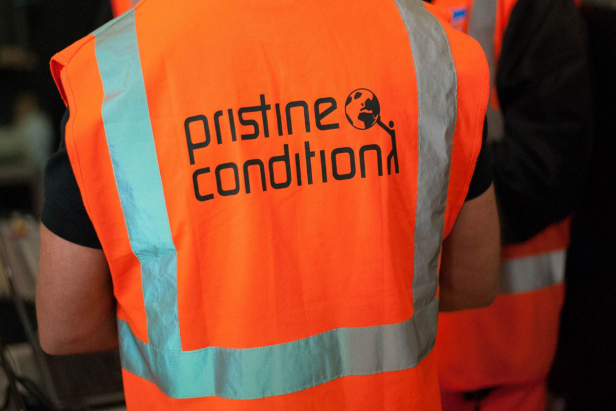
Founder and CEO Davy Snowdon MBE states that traditional approaches to addressing residual risk often fall short. Generic and uninspiring training fails to change behaviour, while outdated assumptions about the causes of injury continue to persist.
Pristine Condition International has consistently challenged this trend with a proven methodology rooted in biomechanics, behaviour change, and real-world application. Their approach is built around three key steps—each essential to reducing manual handling injury rates, improving engagement, and embedding sustainable change.
Injury prevention is ultimately about changing habits—replacing poor movement patterns with safer, more effective alternatives. But behavioural change only happens when individuals genuinely believe in what they’re being taught.
Most conventional manual handling training is generic and unrealistic. Scenarios often involve lifting empty boxes from perfectly flat floors onto waist-high tables—an environment that bears little resemblance to actual working conditions. When employees can’t relate to the training, they disengage. Worse still, they may dismiss it entirely, reinforcing unsafe habits and undermining future safety messages.
In contrast, Pristine Condition focuses on delivering realistic, practical training using techniques that employees recognise as useful and applicable to their day-to-day tasks. Their principles—drawn from the world of Olympic Weightlifting—promote anatomical efficiency, showing that injury prevention is more about technique than weight.
Crucially, training is designed to be engaging, hands-on, and memorable. This helps ensure that employees not only understand the correct approach but are motivated to apply it on the job.
Even with the best training, change can’t be sustained without active monitoring. In many organisations, poor manual handling behaviour goes unchallenged—not due to lack of care, but because supervisors and managers often lack the knowledge to confidently identify and correct incorrect technique.
By contrast, violations like missing PPE are quickly flagged because expectations are clear and binary—staff know what’s acceptable and what’s not.
Pristine Condition applies this same logic to manual handling. Their system trains supervisors to identify specific, clearly defined behaviours that are either right or wrong, with no grey areas. This gives frontline leaders the confidence to intervene and correct technique consistently.
To support this, a simple auditing process allows teams to log behaviours, track trends, and identify areas where reinforcement may be needed. The result is a culture where safe handling is actively observed and supported, not just assumed.
For lasting impact, organisations must go beyond training and monitoring—they need to continually support and adapt their manual handling strategy. That means equipping managers with the tools and guidance to handle new challenges as they arise, whether that’s new equipment, new processes, or changing workforce dynamics.
Sustainable change also requires momentum. Teams should be encouraged to revisit principles regularly—not just through refresher sessions, but in creative, engaging formats that keep safety top of mind. Recognising and celebrating good practice is just as important as addressing poor behaviour.
When injuries do occur, it’s vital that investigations focus on anatomical technique rather than assumptions or opinions. Only by understanding the real root cause can organisations drive meaningful improvement.
With the right support, companies can maintain and evolve their manual handling practices in line with industry trends, emerging risks, and workforce needs—ensuring that their safety culture doesn’t just meet expectations but exceeds them.
Changing workplace habits isn’t easy—but it’s achievable. Organisations that consistently apply these three steps:
1. Win buy-in from their people
2. Monitor behaviour effectively
3. Provide ongoing support and leadership
…are the ones that see significant reductions in manual handling injuries, claims, and costs.
The Pristine Approach delivers a practical, proven framework to do just that—shifting safety from a box-ticking exercise to a measurable, high-impact part of business performance.
If you’d like to discover how Pristine Condition can help your organisation reduce accidents and injuries with our bespoke manual handling training, get in touch with us today!